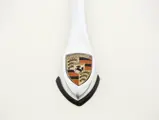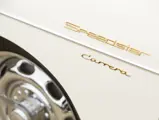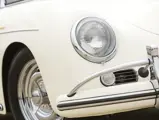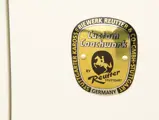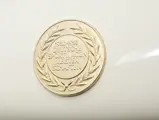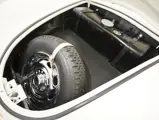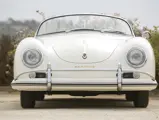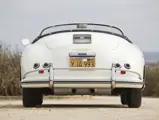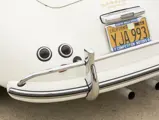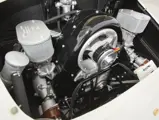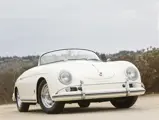
1957 Porsche 356 A Carrera 1500 GS Speedster by Reutter
{{lr.item.text}}
$1,100,000 - $1,500,000 USD | Not Sold
{{bidding.lot.reserveStatusFormatted}}
- Extremely desirable and rare; one of approximately 75 built
- Documented history, with only four owners from new
- Full restoration by marque experts
- Numerous concours awards
100 hp, 1,498 cc air-cooled opposed DOHC Type 547/1 four-cylinder engine with dual Solex 40 PII-4 carburetors, Type 644 four-speed manual transmission, independent front suspension with torsion bars, trailing arms, and tubular shock absorbers, independent swing-axle rear suspension with torsion bars, radius arms, and tubular shock absorbers, and four-wheel drum brakes. Wheelbase: 82.7 in.
With the potent little four-cam engine that powered its “giant-killer” 550 Spyders having proven itself in competition, Porsche decided to capitalize on that success by installing a slightly de-tuned version of the motor in a limited number of its production cars. Thus, the Carrera was born, which was named for the famously brutal and demanding long-distance Carrera Panamericana road race that ran the length of Mexico in the early 1950s. Porsche’s little spyders and production-based coupes were driven by both factory-backed and privateer entries, and they had distinguished themselves in those races. Afterwards, the factory deemed those efforts worthy of commemoration.
This engine was introduced in 1,300-cubic centimeter form, then in 1,500 cubic centimeters, and eventually in displacements ranging upward to a full two liters. This two-liter version was the complex, Fuhrmann-designed, air-cooled, flat four Carrera, which was very powerful for its size but, more importantly, extremely durable, as it could thrive at high revolutions. The Carrera was installed in 356 coupes, cabriolets, and the lightweight speedster, and it turned an already strong performer into an almost unbeatable package. Four-cam speedsters were produced in both well-equipped GS (for Grand Sport) street form and the GT (Grand Turismo), and it was stripped-out and lightened for racing. As such, GTs offered few creature comforts included in the GS.
Weighing barely 1,900 pounds and comfortably equipped with a solid 100 horses tucked into the tail, the GS Speedster was capable of a top speed of 117 mph. The 356 A Cerrera GS Speedsters are nearly identical in appearance to their pushrod-engined sisters, but they could be spotted by the knowledgeable for their larger-diameter exhaust pipes, an 8,000 rpm tachometer, a couple of extra dashboard ignition control switches, somewhat wider wheels, a slightly lower rear ride height (the Carrera motor with its external oil tank was a bit heavier than the pushrod engine), and, of course, the telltale gold “Carrera” script on their front fenders and rear body panel.
The Type 547/1 engine was very similar in appearance to the 1500RS engines that powered the 550 Spyder racing cars. The “four-cam” took its name from the pair of overhead camshafts with replaceable lobes that were installed on each cylinder bank. The cams were driven by a complex system of bevel gears and shafts, which were operated via a countershaft off the built-up Hirth roller-bearing crankshaft. Carrera engines had light alloy cylinders with hard-chromed bores and dry-sump lubrication. Two spark plugs per cylinder were fired by a pair of separate ignition systems, with the twin distributors being driven off the ends of the intake cams. With a 66-millimeter stroke and an 85-millimeter bore, the Type 547/1 engine displaces 1,498 cubic centimeters, has a compression ratio of 9.0:1, and produces 100 horsepower at 6,200 rpm.
This gorgeous white 1957 356 A (T1) Carrera Speedster is the 50th of an estimated 75 built, and it has been described by its knowledgeable consignor as a solid and rust-free example with no issues. Its factory-issued Certificate of Authenticity states that 83087 was completed on March 20, 1957, and it was fitted with U.S.-specification chromed over-rider bumpers, sealed-beam headlamps, and a deluxe horn ring.
The consignor notes that this Carrera GS Speedster has travelled but 29,000 miles from new, in the hands of only four owners, with the fourth owner retaining the car for more than 40 years. Its first purchaser is shown to have been Arnold D. Ladd, of Whippany, New Jersey, who ordered it from Porsche’s New York City importer, Max Hoffman. While the basic Speedster carried a base price of under $3,000, ticking the “Carrera” option on the order form added more than a third to its bottom line.
Mr. Ladd drove and enjoyed 83087 from 1957 until the fall of 1966. Then, he sold this car, which he had driven just 17,000 miles, to Tim Dykman, of Rochester, New York. Mr. Dykman kept the Speedster until March 1968, when he drove it cross-country to personally deliver it to its next owner, Jerry Freck of San Carlos, California. At that point, the Speedster had recorded only 25,000 miles. After acquisition, Mr. Freck stripped the original paint and had the body resprayed. The car was acquired in November 1969 by Daniel Keig, of Berkeley, California, who maintained ownership until 2010, when it was purchased by the consignor. At the time of purchase, the car had 29,135 miles, and it was given a complete, full, concours-quality restoration that consumed two years.
The car was totally disassembled down to its bare shell for this no-expense-spared endeavor, with care being taken so that all metalwork was finished to exact factory specification. Great effort was made to source rare new old stock (NOS or OEM) components; as a result, no reproduction parts were used, which is a noteworthy feat in itself.
The period-correct Type 547/1 four-cam engine was recently rebuilt by Bill Doyle at Rennwagen in Jackson, Wyoming; he is considered by many to be the top Carrera engine expert in the U.S. This is not the car’s original engine, but the replacement of damaged Hirth roller-bearing four-cam motors was a common occurrence in the 1950s. The transmission, suspension, and four-wheel drum brakes have also been rebuilt by noted specialists, as have the fuel system and electricals, including a new wiring loom by Rhode Island Wiring Services.
The floor and all of the body panels on this solid, rust-free example are original and retain their correct, factory matching numbers. The car was refinished in its original color combination of white and black leather Speedster seats, which are trimmed with white piping. The interior, including the boot and cover, the side curtains, and the correct, new German square-weave carpets, was handled by Thomas Pocious, and the dashboard instruments were rebuilt by North Hollywood Speedometer. Its original trim parts were restored by marque expert Victor Miles at Concours Refinishing in Ventura, California, and all necessary rechroming was done by the renowned Chris Hanson’s shop in Los Angles, all in triple plate. The car was recently fitted with a set of period-dated (10-57), rebuilt, chromed Rudge knock-off wheels and hubs, which were an expensive factory option and are highly sought-after today. The consignor states that maintaining period authenticity was important, and “no stone was left unturned” in his pursuit of excellence.
Recent concours awards include a First in Class at the 2013 Desert Classics Concours d'Elegance, an Award of Excellence at the 2013 Greenwich Concours d' Elegance, a Second in Class at the highly competitive 2013 Dana Point Concours d' Elegance, and a Second in Class (Full Concours) at the 2013 Dana Point 356 Concours.
Today, surviving Carrera Speedsters are in great demand by knowledgeable Porsche collectors around the world. Fully restored examples infrequently come to market, and this handsome car, offered in its original paint and upholstery color combination, presents a rare opportunity for the discerning enthusiast.
Along with a factory-issued Certificate of Authenticity, this car is supplied with a correct tool kit and jack, service records, and several books that are pertinent to this rare model.

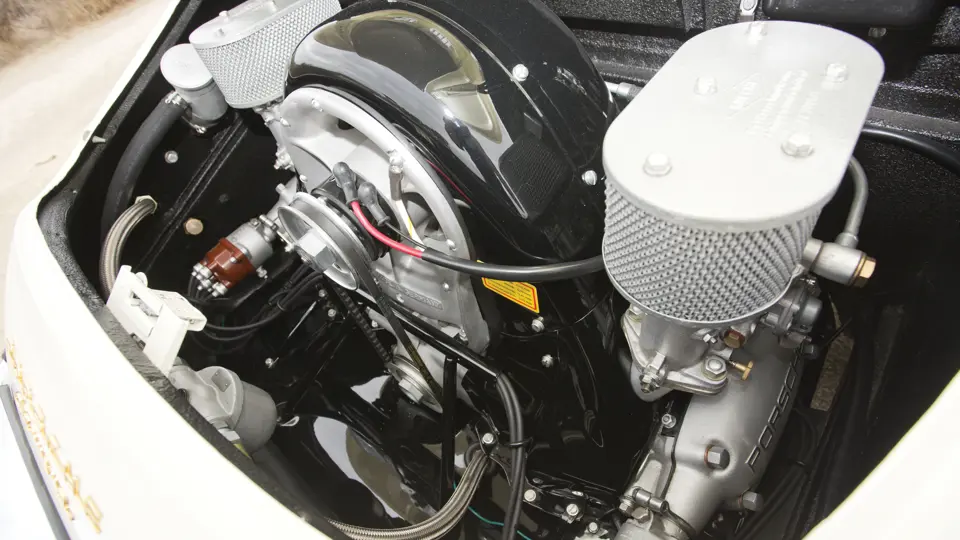


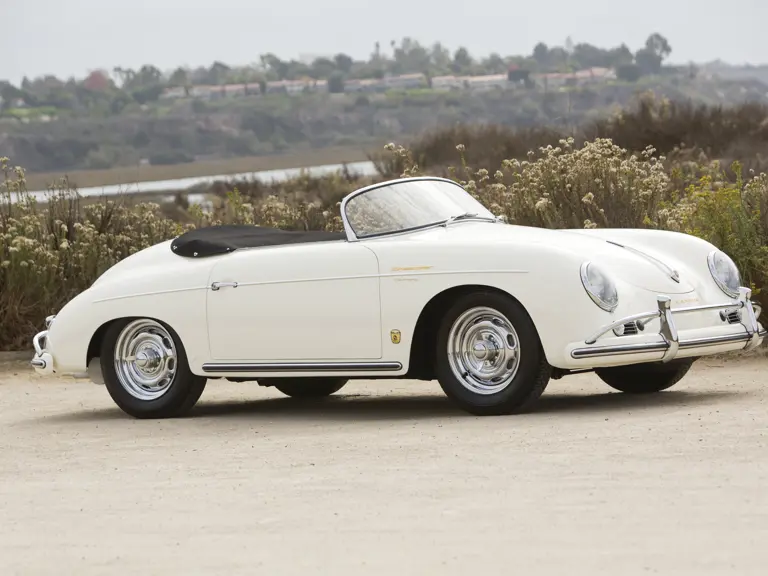
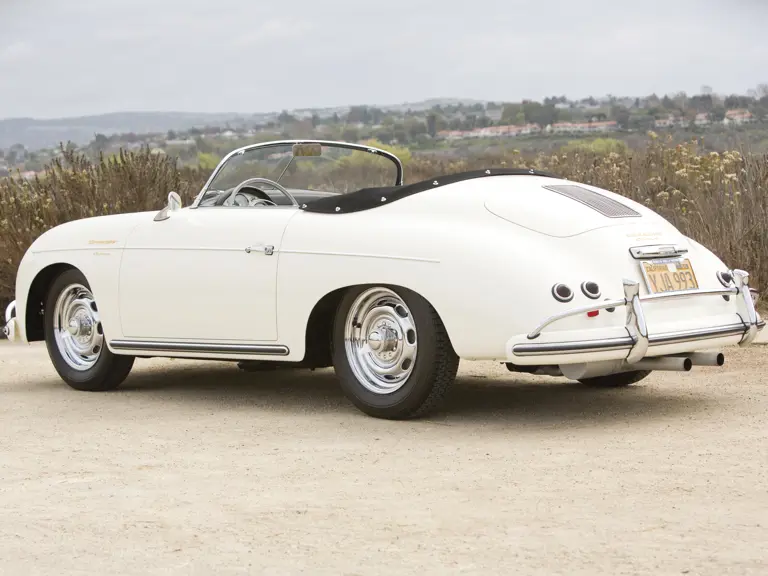


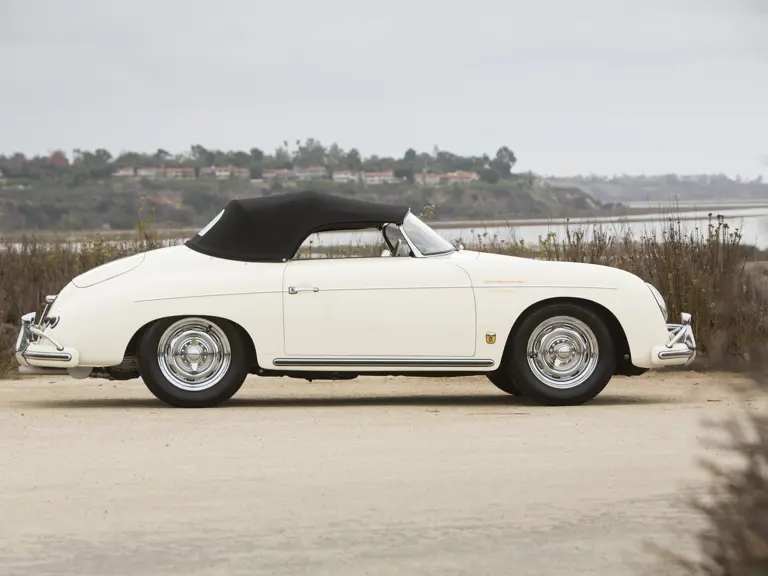
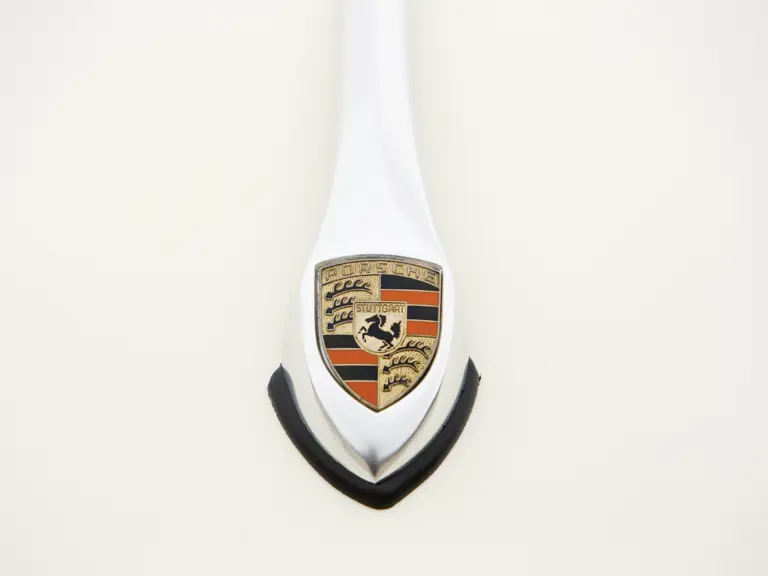
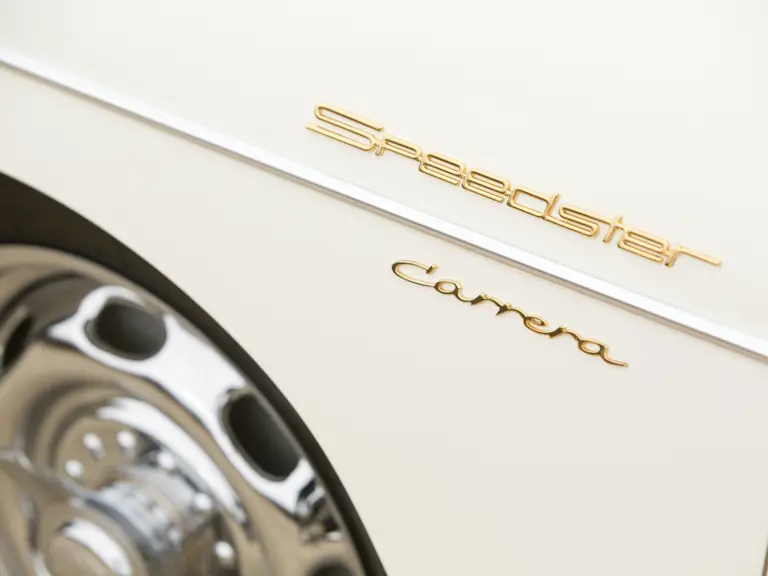

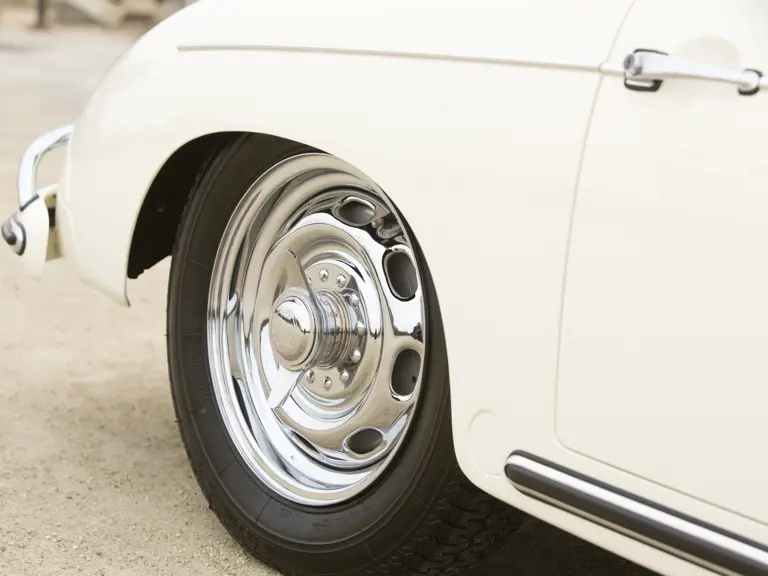
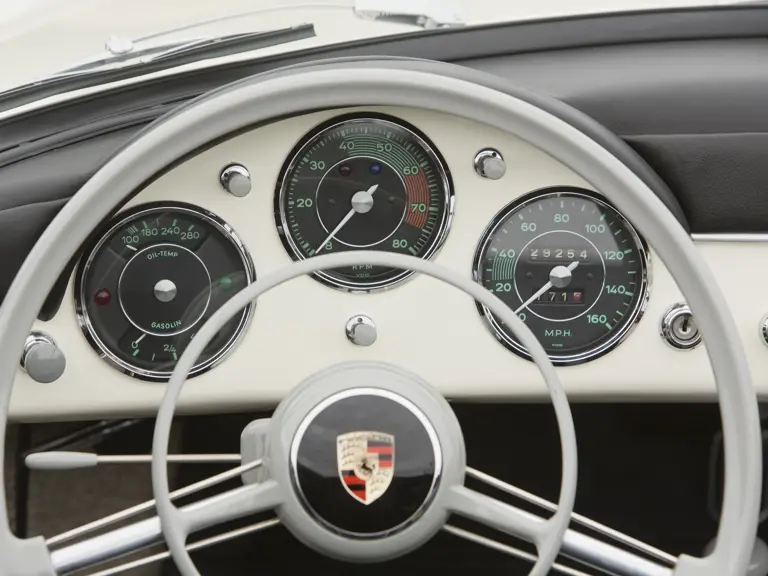

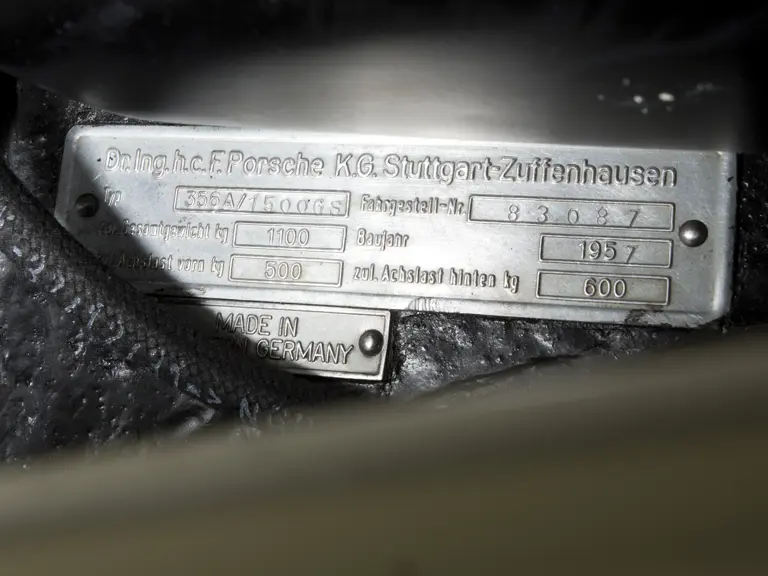
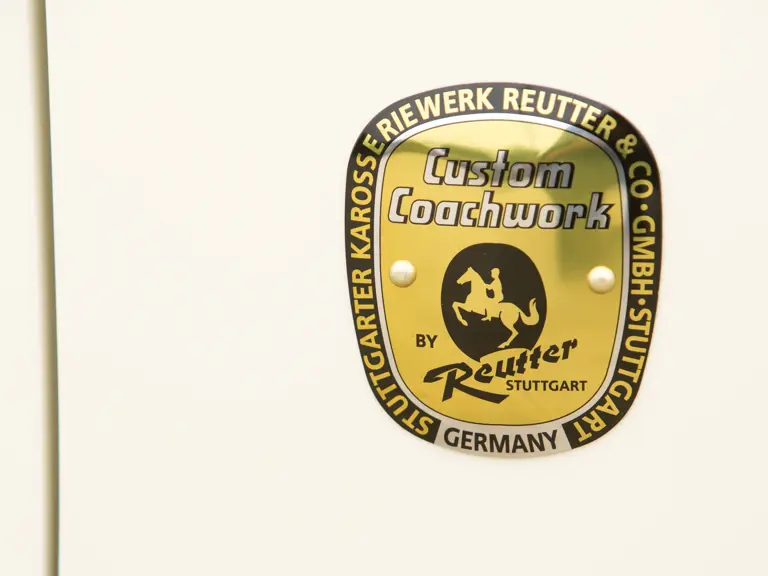

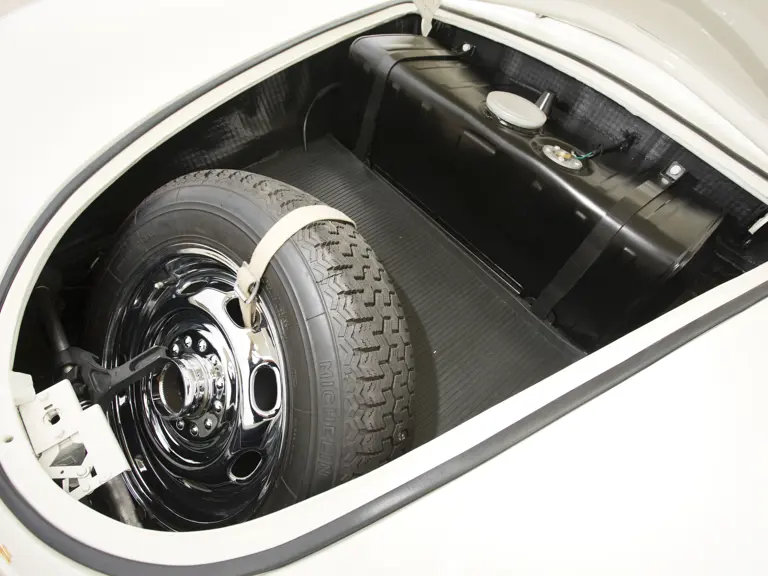
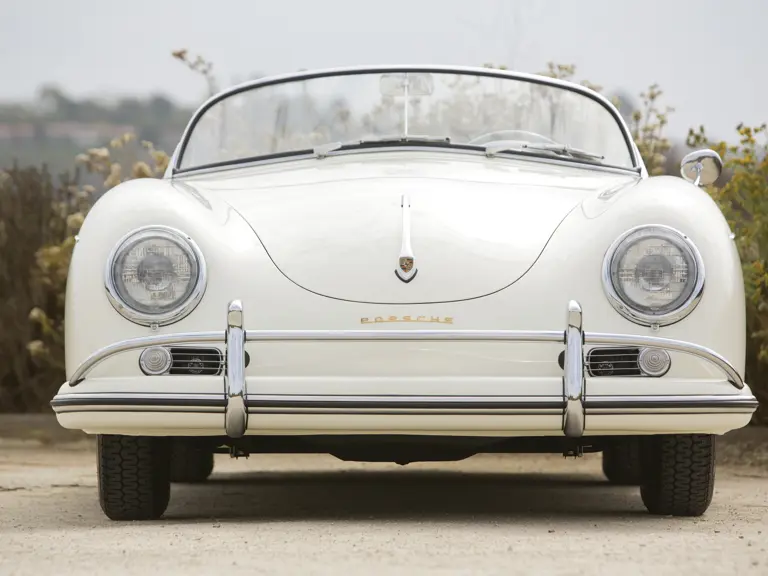
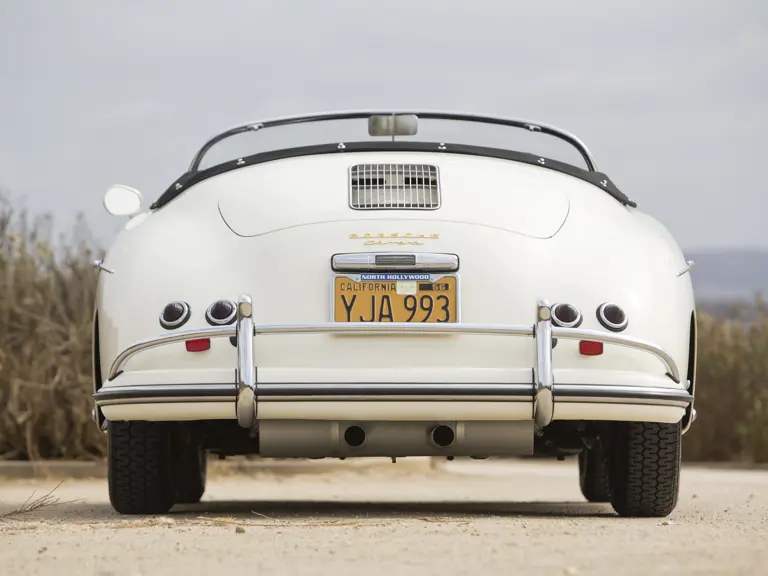


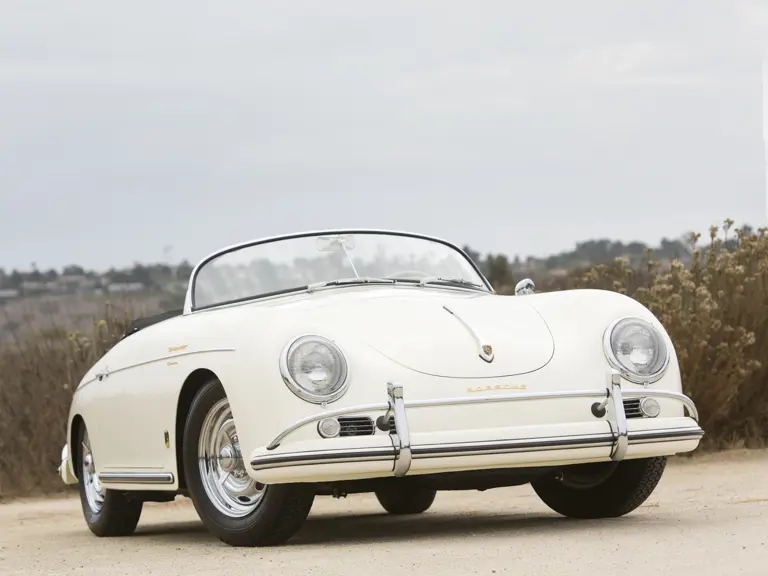
 | Phoenix, Arizona
| Phoenix, Arizona




